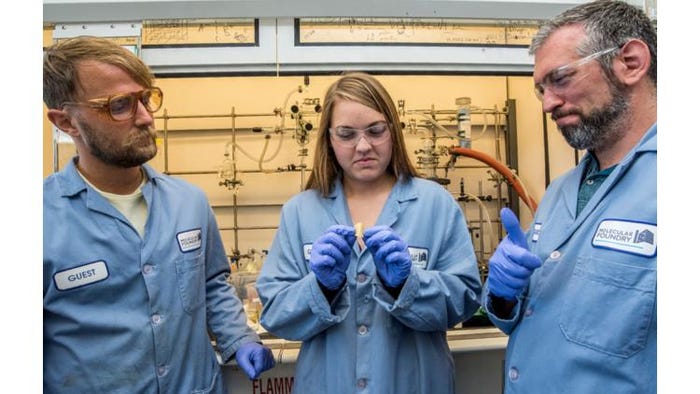New plastic for food packaging is infinitely recyclable
A new packaging plastic aims to leapfrog the paltry U.S. recycling rates of around 30% for polyester and high-density polyethylene—the two highest recycled packaging plastics, according to Environmental Protection Agency stats. Meet PDK, poly(diketoenamine), a new potential game-changing polymer that can be manufactured, used, recycled and re-used—without losing its properties or value.
Developed by researchers at the U.S. Department of Energy’s (DOE) Lawrence Berkeley National Laboratory, PDK is described as recyclable plastic that, “like a Lego playset, can be disassembled into its constituent parts at the molecular level, and then reassembled into a different shape, texture, and color again and again without loss of performance or quality,” according to a press release on the Berkeley Lab website.
The technology is available for licensing and collaboration. Interested? Contact Berkeley Lab’s Intellectual Property Office.
How can this new “infinitely recyclable” plastic be used for packaging? Packaging Digest asked PDK researchers at the Berkeley Lab about the material’s packaging applications, as well as its potential impact in the existing recycling infrastructure.

PDF researchers (left to right) Peter Christensen, Kathryn Loeffler and Brett Helms. Photo credit: Marilyn Chung/Berkeley Lab
What are the physical properties of PDK? Clarity, pliability/rigidity, manufacturing method (blow or injection molding, thermoforming)?
The physical properties of PDKs are reminiscent of nylons and thermoplastic polyurethane (TPUs).
Will PDK be a suitable plastic for packaging applications? If so, how could PDK be used for packaging?
We envision using PDKs to facilitate the deconstruction of multilayer food packaging.
How does PDK compare/contrast with other packaging plastics, specifically polyethylene terephthalate (PET)?
We do not see PDKs as an immediate replacement for PET. Rather for the non-recyclable plastics, or instances where plastics like PET are compounded to such a great extent that it’s no longer recyclable or when PET is part of a non-deconstructable multi-material assembly.
How might PDK impact the plastics recycling systems already in place, especially for PET?
Sorting schemes for PDKs are possible, as they have a distinctive chemical signature relative to other plastics. Regarding waste processing: Once sorted, our process is likely as easy to scale as Loop’s depolymerization process for PET.
About the Author(s)
You May Also Like




